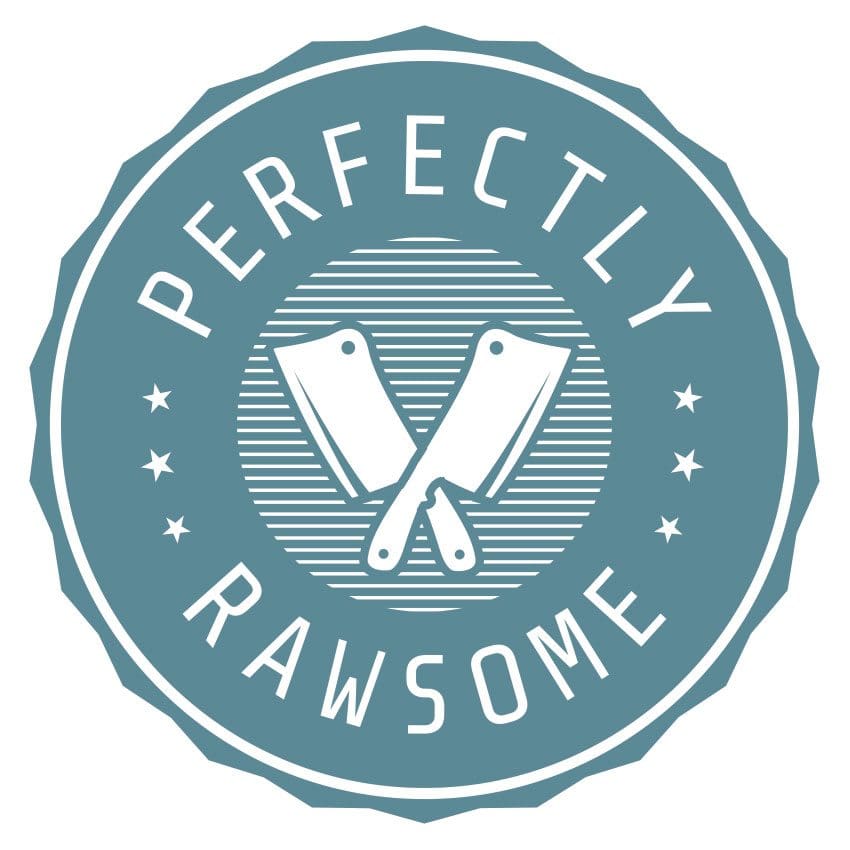Unfortunately, many allergy tests on the market are known to produce false positives. This can make finding safe foods for pets with food allergies very difficult. A properly executed elimination diet is a useful tool in identifying which foods are safe for dogs and cats.
Itching, vomiting, gas, and loose stools can sometimes be the result of food intolerances if other causes for these symptoms have been ruled out. Many pet owners attempt an elimination diet by randomly eliminating certain foods that they suspect might be the problem. However, this approach is hit or miss, and the owner may be eliminating one food while leaving other foods in the diet that may be causing the problem. In order to clearly identify problem foods, a strategic approach needs to be taken.
Wellness Examination
Rule out other causes of the allergy symptoms with a veterinarian before beginning an elimination diet.
Realistic Expectations
Elimination diets are time consuming and can be costly. Do not expect immediate results.
Common Food Allergens
There are several proteins that can be avoided in the beginning stages of an elimination diet.
Novel Protein Diet
It’s important to find a safe, novel protein to use as a foundation for an elimination diet.
Slow Ingredient Introductions
Each new ingredient should be given a 2-4 week introduction period.
Achieve Nutritional Balance
Focus on strategically introducing new ingredients that will help to balance the diet with all essential nutrients.
"Hidden" Ingredients!
Be mindful of supplement formulas that may include ingredients that trigger food sensitivities.
Gut Support
Dogs and cats with food allergies and sensitivities may have poor gut health and biodiversity.
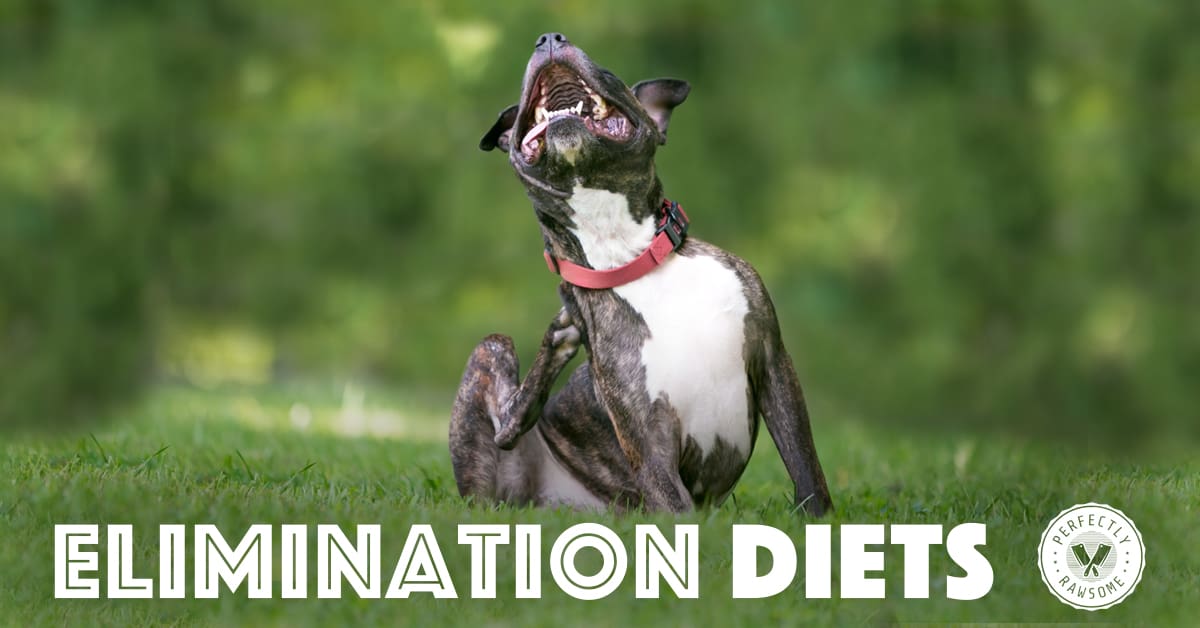
Wellness Examination
Before beginning an elimination diet, it is important to rule out other potential causes of your pet’s symptoms. The same symptoms that may indicate a food intolerance can also indicate other dietary or medical issues. Identifying the root cause of the issue is essential in order to assess whether an elimination diet is appropriate.
The pet should be free from medical conditions, parasites, and protozoa before attempting an elimination diet. A complete physical wellness exam should be performed by a board certified veterinarian to ensure the animal is physically healthy.
Current Diet Nutritional Audit
Many homemade and even commercially made raw diets are deficient in several key essential nutrients. The symptoms of these nutrient deficiencies can often be mistaken for allergies. Most notably are Zinc, Iodine, Vitamin E and Omega-3 Fatty acids. Before assuming the dog or cat has allergies, read how to fulfill these nutrient requirements with whole foods. If a commercial raw pet food is fed and it is formulated to AAFCO or FEDIAF nutritional guidelines, then the food is complete and balanced.
Yeast & Bacterial Skin Infections
Another potential cause of allergy-like symptoms is yeast or bacterial infections. While yeast is a natural component of a dog and cat’s microbiome, certain factors can cause yeast to bloom and create a yeast infection. Excessive scratching and grooming and lead to secondary bacterial infections. An elimination diet can be an effective tool when a yeast infection is being triggered by certain foods. However, if a yeast infection is linked to other environmental factors, then an elimination diet may not be useful.
Environmental Allergies
Many pet parents don’t realize that there are multiple potential triggers for allergies. Just like humans, dogs can be allergic to various things in their environment as well as certain foods. Grass, pollen, household cleaners, and dust mites are just a few examples of the many possible environmental allergens. Unfortunately, an elimination diet will not help with environmental allergies.
In addressing the above factors, pet parents may discover that their pet does not actually have food intolerances, therefore an elimination diet is not necessary. However, if the above issues have been ruled out and it is believed that the dog or cat has food intolerances or allergies, then an elimination diet is necessary to alleviate symptoms and build a diet of safe foods.
Realistic Expectations
There are several factors to consider when attempting an elimination diet. It is important to set realistic expectations to avoid future frustration. Caring for a pet with special needs is never easy, however being prepared for the commitment will hopefully help prevent discouragement for the pet owner.
Long Term Commitment
By nature, elimination diets take a long time to properly execute. While the initial stages will not be nutritionally balanced, it is essential not to rush the process. When a new food causes a reaction a reset period will be required. Preparing mentally for this process will help alleviate any exasperation you may feel.
Moderate to High Expenses
Unfortunately, caring for a pet with special needs is often costly. Some pet owners may get lucky in that their dog or cat does well on more common and affordable proteins. However, some pets may need more exotic proteins. These exotic meats are often more expensive and harder to source than meats found in grocery stores.
Sourcing Difficulty
Depending on the sourcing available in your area, it may be difficult to acquire a safe novel protein for your pet. A commercially made, single protein, premade raw food may be easier to acquire than trying to source meat, bones, and organs separately.
Common Food Allergens
While every pet is an individual, there are a few foods that tend to be “common” allergens. This is not to say that these proteins are “bad” in and of themselves, but due to various factors there are a higher percentage of pets that have been noted to be intolerant to these proteins. Some proteins to potentially avoid are:
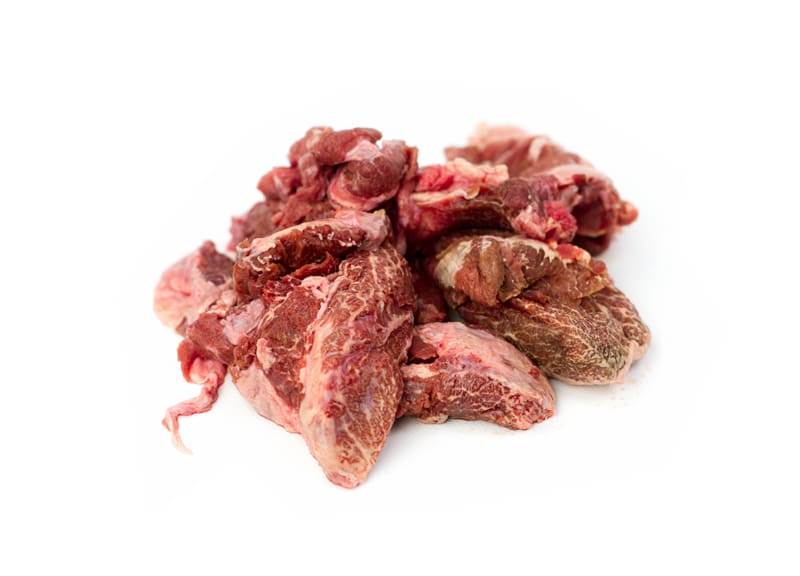
Beef
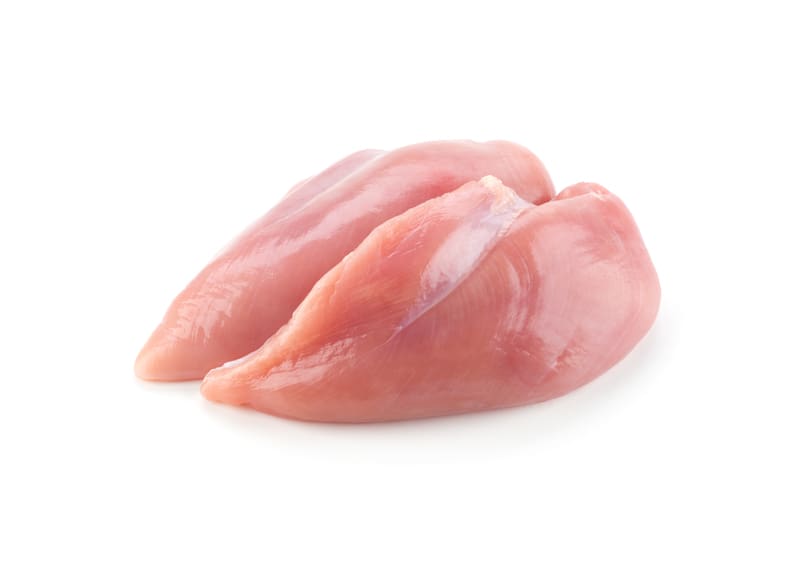
Chicken

Shellfish
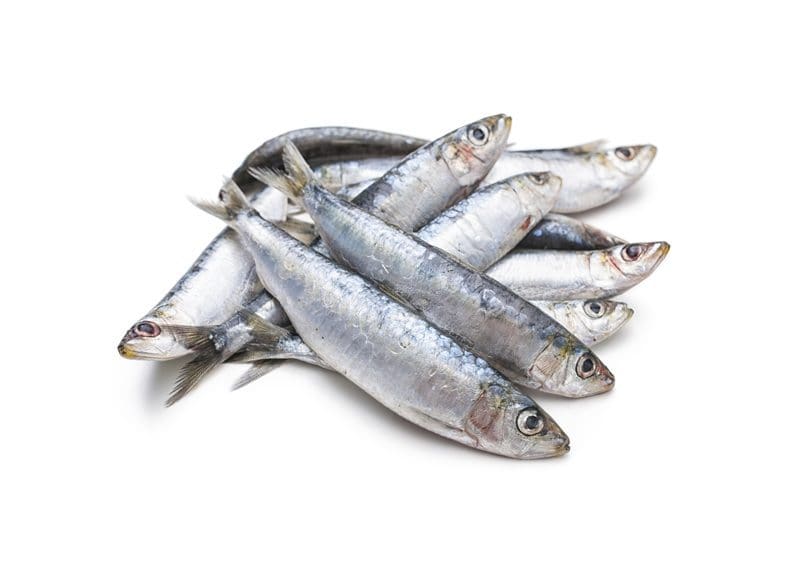
Fish
When choosing a safe protein to begin an elimination diet, these proteins offer guidance on what to initially avoid. Although, if you know for certain that your particular dog does well with one of these proteins, then there is no reason to eliminate them from the diet.
“Novel” Protein Diet
Step one of starting an elimination diet is finding a safe protein for your pet. This is often a “novel” or “exotic” protein that the dog or cat has never eaten before, although it could be a more common protein that does not cause a reaction. This depends on the individual animal and what proteins are easily accessible. The following is a list of protein suggestions besides beef and chicken, however every pet is an individual and may or may not react to any given protein.
Common Proteins
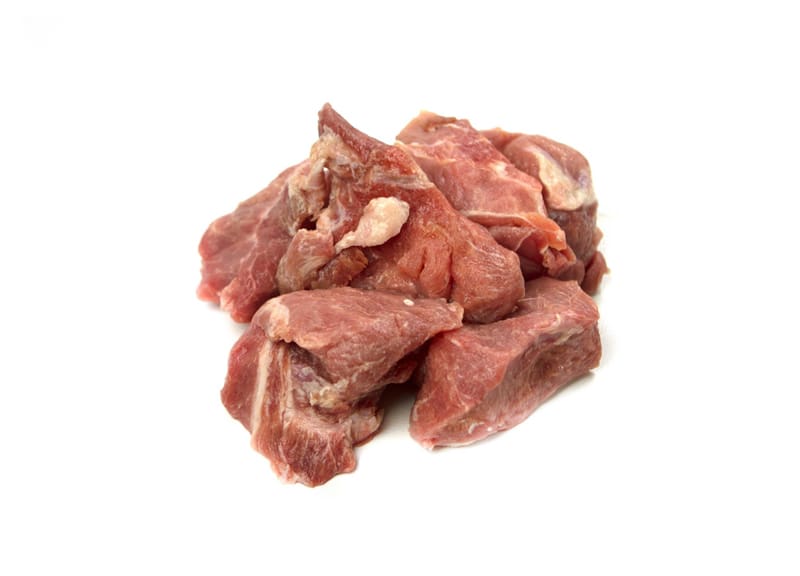
Pork
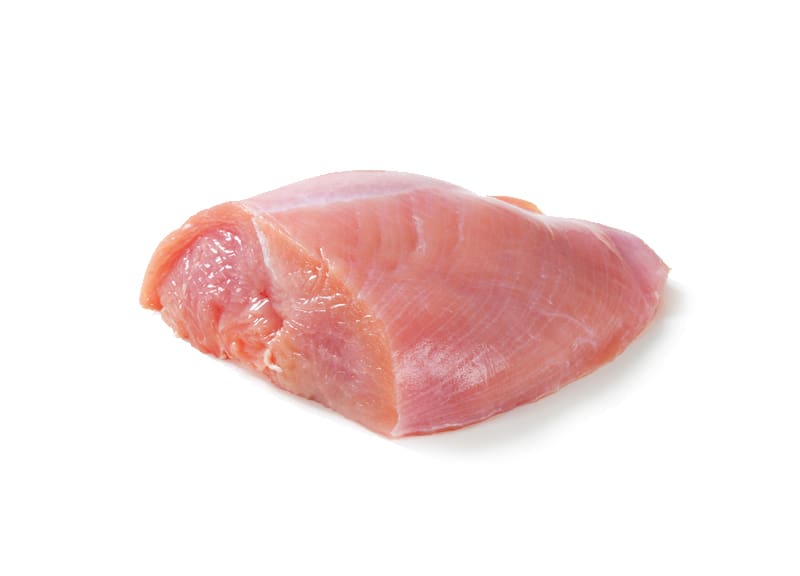
Turkey
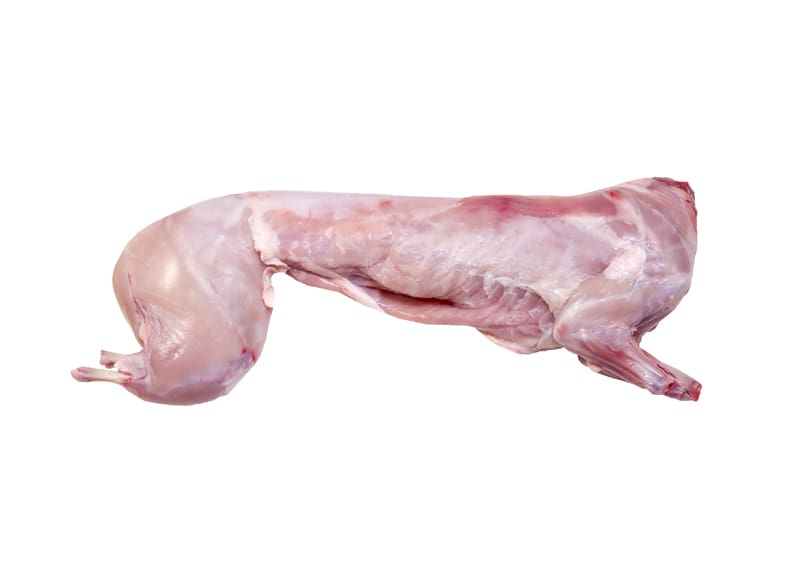
Rabbit
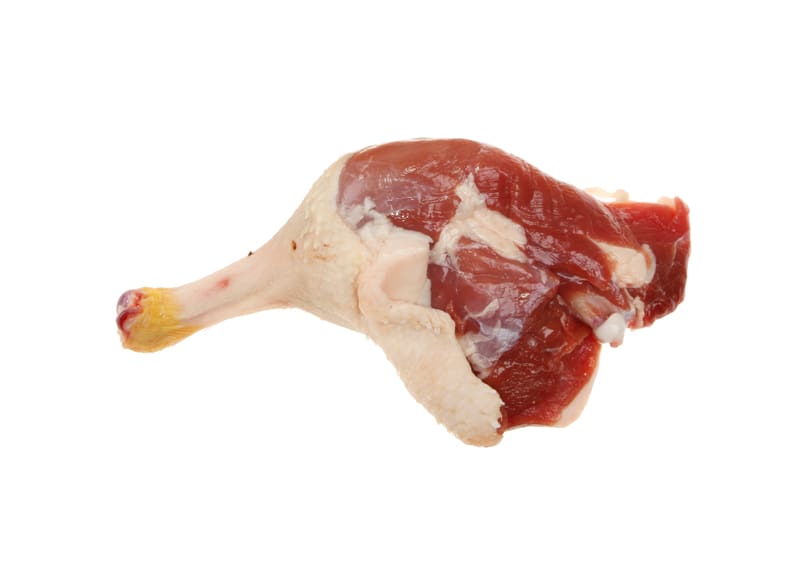
Duck
Exotic Proteins
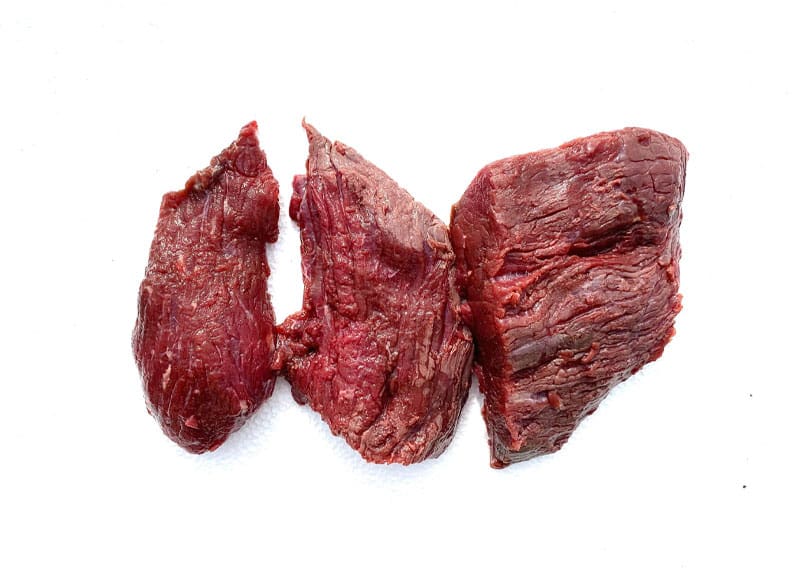
Bison
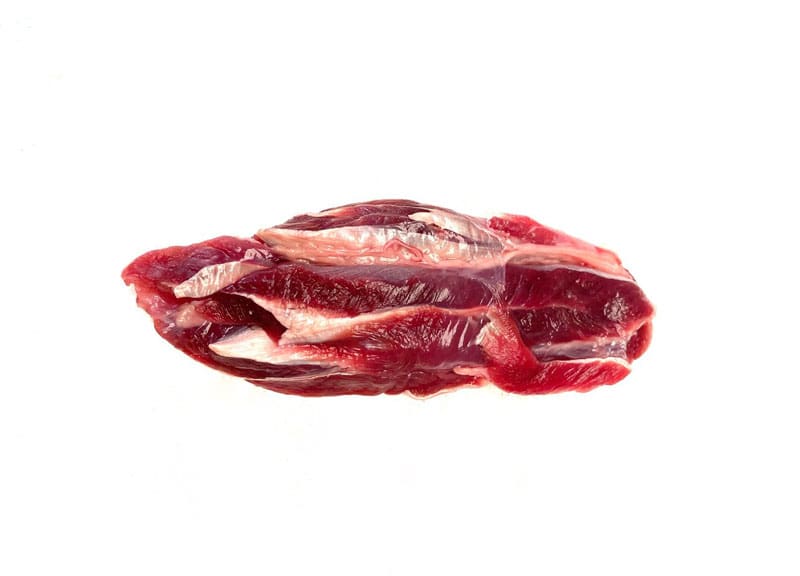
Goat
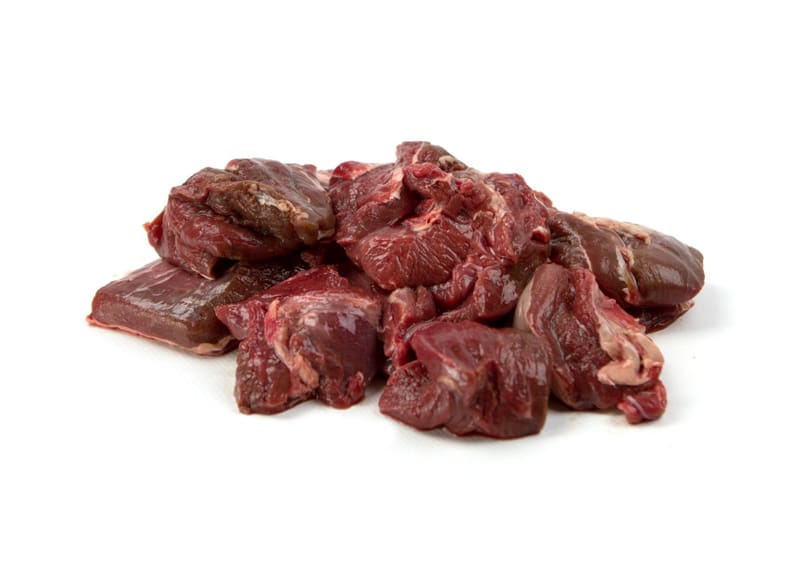
Venison
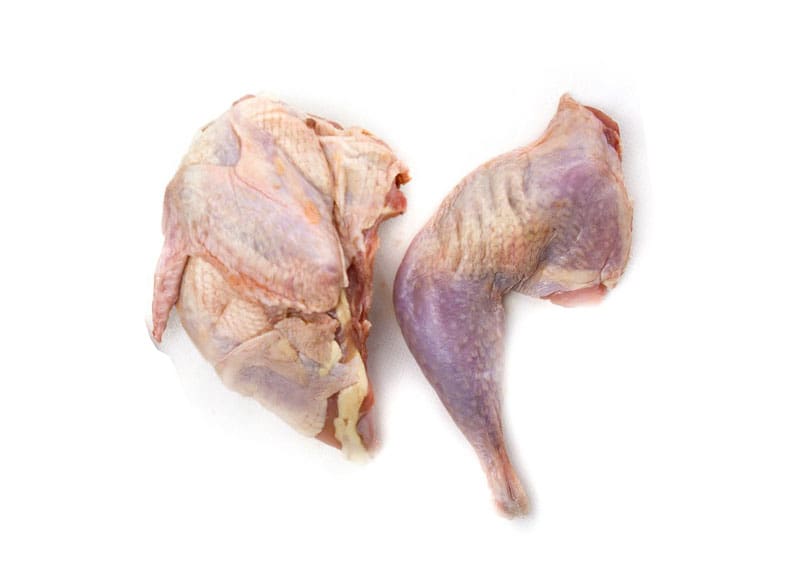
Pheasant
Once a novel protein is selected, begin by constructing a base diet for the dog or cat. It is important to follow the ratio guidelines that are appropriate for the species and life stage of the animal. Adult dogs have different ratio guidelines in comparison to puppies and cats. These ratio guidelines will serve as the foundation for the elimination diet utilizing a novel protein.
Feeding Duration
Start by feeding the base diet with a novel protein for 6 weeks without any other ingredients. This initial 6 week period is required as a “reset” period to allow the pet’s body to heal and reset. It can take up to 6 weeks for histamine levels to decrease. Therefore, the goal of this period is to reduce histamine levels within the body which will decrease symptoms.
If additional treats are given during this time, it is important to ensure those treats are single ingredient and are in the same novel protein as the elimination diet. Otherwise, it is best to avoid any treats with multiple ingredients to avoid possible reactions during the elimination diet process. Additionally, it is not recommended to add any supplements at this time because many supplements have binders or alternative ingredients that may cause a reaction. In order to have full control of individual ingredients it is necessary to trial each supplement individually later in the process.
Realistic Expectation Tip 1
If symptoms begin to get worse on the novel protein, a different protein selection may be required.
Slow Ingredient Introductions
Once a safe baseline diet has been fed for 6 weeks and the pet’s symptoms have improved, begin slowly introducing new foods. Each new ingredient should be given one at a time for 2-4 weeks each to determine if the new food is safe.
Start Small
Some pets are sensitive to quick diet changes rather than the food itself. Start with small amounts of the new ingredient in the meal and slowly increase the amount if no reaction is noted.
Monitor Closely
Watch closely for any returning symptoms. If there is a reaction to an ingredient, eliminate that ingredient from the diet entirely and find an alternative. Give an additional reset period after a reaction before moving onto a new food. This will depend on the individual and may not need to be the entire 6 weeks.
Repeat Introduction Steps
Give each new ingredient it’s own 2-4 week trial. It is essential not to rush the process at this point. If too many new foods are given in the same meal and there is a reaction, then it will be difficult to know which item was the culprit.
Realistic Expectation Tip 2
This process can be tedious, but if followed accurately it will provide the steps to identify which foods the pet can safely eat and which foods must be eliminated.
Achieve Nutritional Balance
In the beginning stages, an elimination diet will not be nutritionally balanced. This is temporary and will not have detrimental effects for adult dogs and cats! However, an elimination diet is not recommended for growing puppies and kittens without careful formulation from a nutritionist.
For adult dogs and cats, the focus should be on strategically introducing new ingredients that will help to balance the diet. Which ingredients to trial first can depend on what safe novel protein was selected to create the foundation elimination diet.
Red Meat Proteins
If the elimination diet began with white meat protein or pork, it would be beneficial to focus on adding a ruminant protein to the diet if possible. Ruminant organs are higher in certain essential nutrients like Copper and Vitamin A.
Minerals & Fatty Acids
Initially try to focus on increasing essential minerals and Omega-3 Fatty acids in the diet. Trialing ingredients such as kelp, oysters, and fish will accomplish this goal. Keep in mind these are all seafood items, and it is important to watch for reactions and find an alternative if necessary.
Supplement Alternatives
In the event that an ingredient causes a reaction, remove that item from the diet and select an alternative option. While whole foods are ideal, a supplement may be necessary in some instances because several essential nutrients have limited whole food sources. If a whole food option causes a severe allergic reaction, then a supplement would be required. If supplements are necessary, be sure to trial supplements as well. Additionally, it is recommended to select supplement brands from an FDA and GMP certified facility, that third party purity tests the supplements, lists all ingredients available in the supplement, and provides the nutritional breakdown of the nutrients available in the supplement.
Whole Foods for Essential Nutrients Article
It is important to identify these common deficiencies and select the appropriate whole foods to provide a nutritionally complete diet. Find out more in the whole foods for essential nutrients article.
“Hidden” Ingredients!
“Hidden” ingredients in supplements can be problematic if the pet parent is not aware of them, or if the supplement is required for a medical condition. In an elimination diet, supplements should also be introduced with a 2-4 week trial period per supplement. Additionally, it is important to read the ingredient labels and be mindful of what certain ingredients may be derived from. Certain supplements may be made from whole foods that the pet is sensitive to. Examples include:
Joint Supplements
Many joint supplements are often derived from shellfish. If a dog or cat is sensitive to shellfish then these supplements will likely cause a reaction and an alternative will need to be found such as a vegan based joint supplement.
Gel Capsules
Many gel capsule supplements use components derived from beef to create the gel cap. A dog or cat sensitive to beef may react to these as well. If this is the case then there are vegetable based capsules that may be appropriate.
Vitamin E Oils
Many vitamin E oil supplements are made from soy. If there is a soy allergy or intolerance, these supplements should be avoided. Vitamin E from sunflower is an alternative option.
This is not an exhaustive list of potential hidden ingredients in supplements. It is recommended to read the ingredient label carefully and research how the supplement is made. If a supplement that is required for a medical condition contains a problem ingredient, then it is recommended to consult with a veterinarian for an alternative.
Gut Support
Pets with food sensitivities often may have poor gut health and biodiversity. Some additional gut health protocols may prove beneficial.
Prebiotics (Fiber)
Adding prebiotics to the diet in the form of fiber can improve digestion by supporting the colonization of probiotics. Fermented vegetables can provide both prebiotics and probiotics. Always trial new vegetables just like any new ingredient when following an elimination diet protocol.
Soil-Based Probiotics
Probiotics can be helpful in increasing the biodiversity of the gut microbiome. In dogs and cats with food intolerances, dairy-based probiotics may not be an option. Soil-based organisms may be a better alternative.
Bone Broth
Bone broth contains properties that can be healing to the intestinal wall, however there are some cautions to consider. Bone broth cooked for longer periods in a crock pot will be higher in histamines. Using a pressure cooker will reduce the cooking time and therefore the histamines. In addition, make sure to make bone broth using the bones from a safe protein that will not cause an allergic reaction.
CLOSING COMMENTS
If the steps in an elimination diet are followed properly, then it is possible to eliminate problematic foods and have a happier, healthier pet.
Select a Novel Protein
It is important to determine a foundation diet utilizing a protein that does not cause any allergic reactions. The baseline diet must consist of muscle meat, raw meaty bones, and secreting organs from the novel protein, with no other ingredients.
Six Week Feeding Duration
Feed the novel protein diet for 6 weeks to allow the histamines within the body to decrease which will ultimately decrease any symptoms. (e.g. Licking, scratching, redness, etc.)
Introduce New Ingredients Slowly
Start to build a balanced diet by introducing new foods and proteins after symptoms have decreased with the novel protein diet. Every new ingredient and supplement should receive a 2-4 week trial introduction. The length of the trial period will depend on the individual and it is important to monitor the individual pet for guidance. Eliminate any ingredient that causes a reaction.
Reset If A Reaction Occurs
Be patient with the process and give the dog or cat’s body time to reset if a reaction occurs. This additional reset period may vary depending on the severity of the reaction.
An elimination diet is a long process and it can get expensive for pets who require harder to source ingredients. However, the effort applied to accomplishing an elimination diet protocol will result in a pet with a better quality of life!
